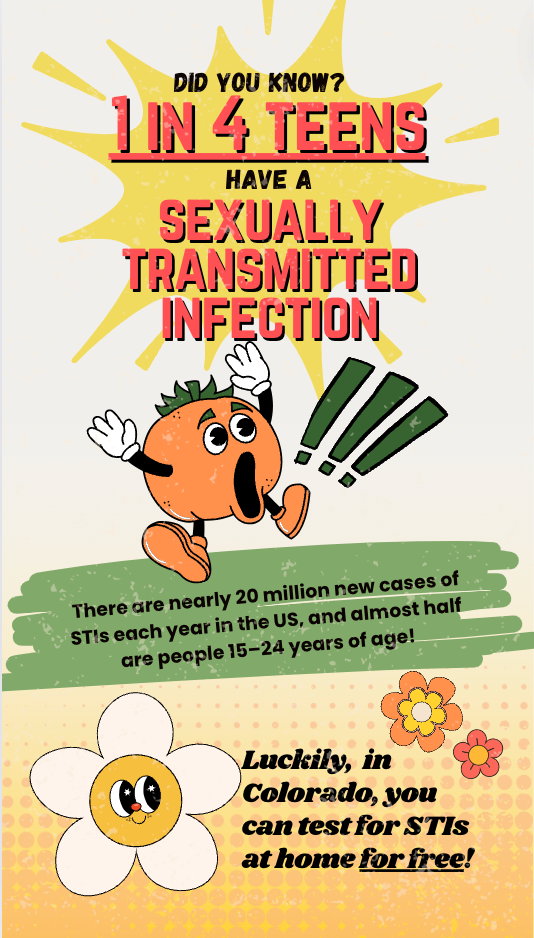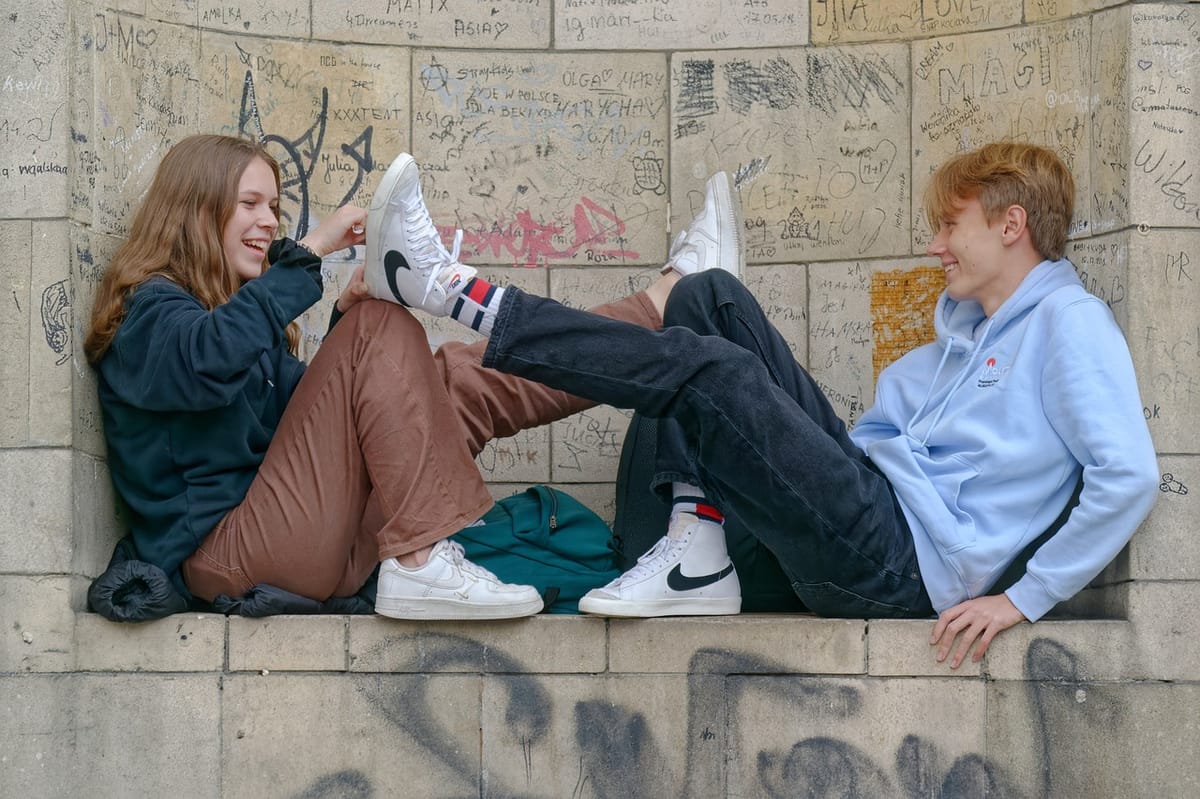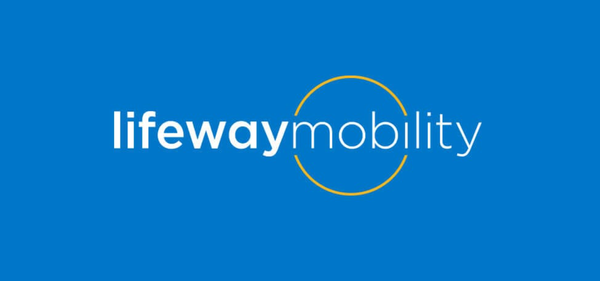The project:
Client: Colorado Department of Public Health & Environment (CDPHE)
Product: Instagram reels covering 5 topics related to sexual health
Audience: 12-22 year olds in Colorado
Partner: I am working on this project with another student, Kat Vivarelli.
Why this project:
When I was in high school (the target demographic for this project), I was a member of the Planned Parenthood Teen Council in Eugene, OR. I also was part of a team of junior and senior volunteers who taught sex ed to sophomores at my high school. So, this kind of work felt nostalgic and fun to me!
This project also felt like a good fit for me because of my interest in designing infographics and other visual media. I studied theater design in undergrad, and I worked as a theater designer (mostly costumes and props) for several years before transitioning towards working in education.
The process:
Designing the Instagram Reels
When we started this project, the plan was to do one 90-second Instagram Reel per topic. However, as we started to plan out the reels, we realized that trying to cram all of the information we needed to cover into one long reel would both be more difficult and would likely lose people’s attention. This was supported by the research we did into the best strategies to get engagement on educational reels. So, we decided to do 3-5 short reels per topic, with more information in the caption and links in the bio.
When coming up with the aesthetic for the reels, we aimed for something that feels more “vintage” or “retro.” Our thinking was that vintage and retro styles feel more timeless, which can help them feel more cool and relevant, and avoid the trap of seeming like adults who are “trying to hang with the youths” and being labeled as cringe.

Currently, we are working on A/B testing to get feedback from our target age demographic to answer questions like:
- Should we record our real voices in the reels, or use an AI voice?
- Should we use trending audio, or should we just use more generic/less distracting underscoring?
- Should we use a carousel so viewers can move through the information at their own pace, or animate the transitions so viewers don’t have to swipe through to see everything?
Curating the Content
For the actual content of the reels, we received bullet points from our subject matter experts at the beginning of the project. We turned this into a script for the reels, as well as writing captions and finding links with relevant resources.
One of the initial challenges we ran into was choosing language. Typically, the CDPHE works primarily with medical providers and other audiences for whom legally and medically accurate language is super important. For 12-22 year olds, we wanted to use simpler and more conversational language to get our point across. For one example, the CDPHE usually only uses the phrase “acquire an STI” rather than get or catch, as it feels less stigmatizing and more accurate. However, we were worried that this type of language would lose our target audience’s interest and/or confuse them. We were able to convince leadership that for this audience, it made more sense to use straightforward and easy to understand verbiage rather than technical jargon.
Beyond just the language, there were a few other small roadblocks we ran into with what we could and could not address. For example, we were instructed not to mention abortion, because it is such a politically sensitive topic and the CDPHE is much more focused on STI prevention and care. In general, navigating some of the restrictions of working for a government organization while trying to create content for teens and young adults is an interesting challenge!
Reflection
For me, one of the main themes/questions of this project was: how do you design educational materials for those who haven’t volunteered to be educated?
In the past, I’ve mostly worked in a teaching artist or school context, and often most of the people who attended wanted to be there. Or, because I was working with specific individuals in-person, I could work to figure out my students’ motivations and interests and adjust my lesson plans as needed.
This project fell more into the intersection of advertising and instruction. For the reels themselves, the primary focus is to grab the viewer’s attention as quickly as possible. Especially for young adults scrolling through Reels on Instagram, if we don’t get them to stop and look, we’ve already failed. The hope is that once they’ve stopped to look, they will open the caption and/or go to the resources linked in the bio, and find the more in-depth information they need there.
It was interesting to create materials designed to “trick” the viewer into learning something. A lot of the research we did into the best strategies for engagement was along these lines – using phrases like, “I know it sounds crazy, but…” or “Three things you don’t know about…” to grab viewers’ attention. In a lot of ways, these strategies go against my usual approach to learning design. However, it was a great exercise in thinking about how to approach micro-learning and how to get learners to engage, even if they aren’t sure they want to!














Member discussion